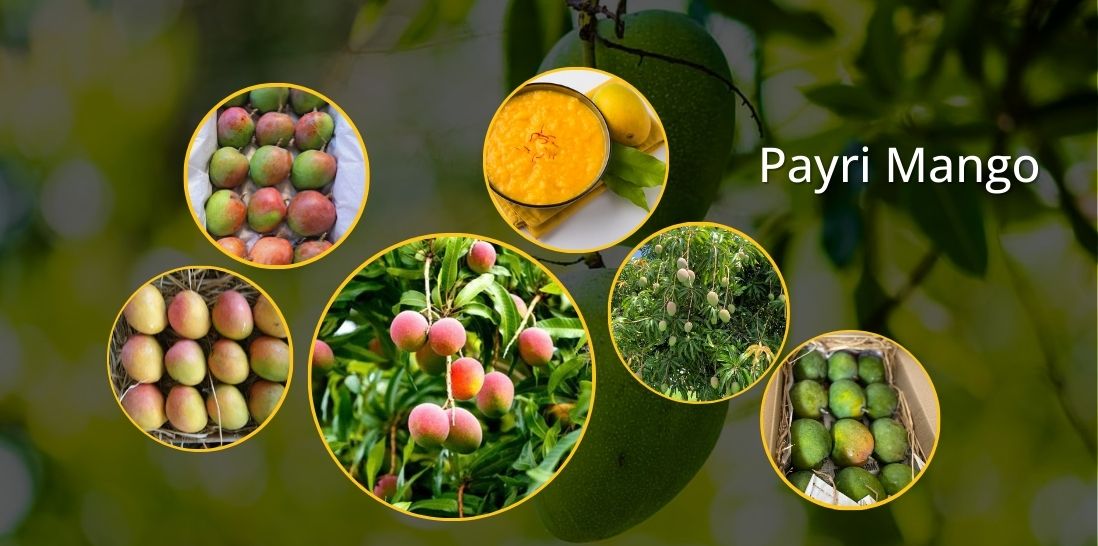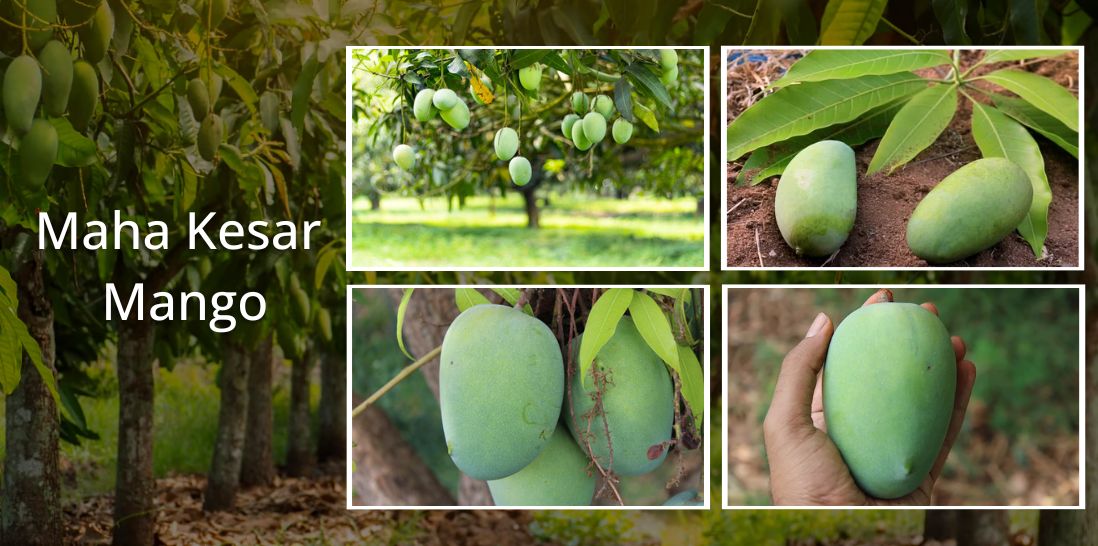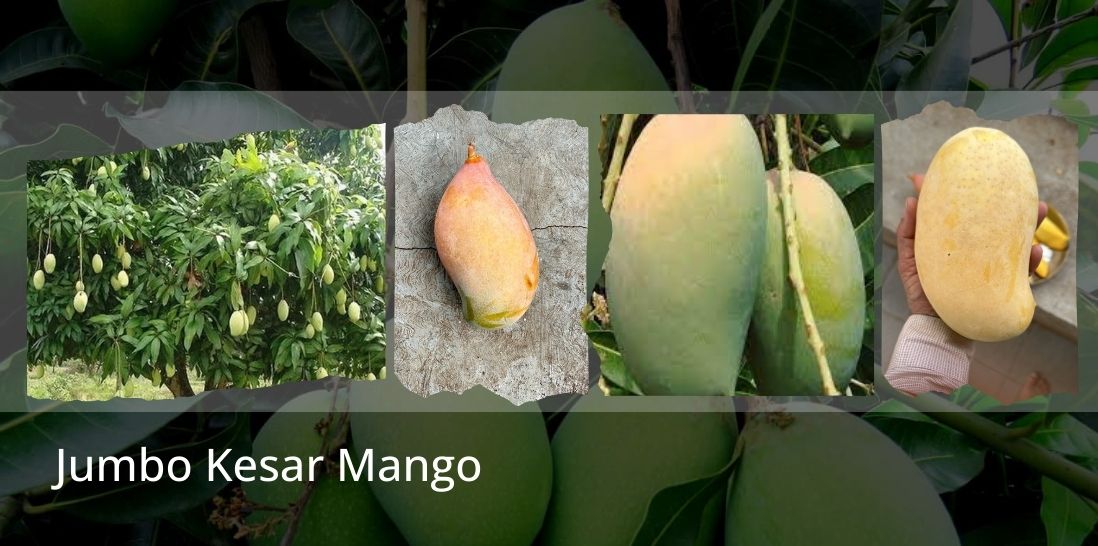
Mangoes

Payari Mango is one of the best mango variety from Konkan Maharashtra and is known for its tender, juicy taste with a mix of variety of stone fruits, lending natures’ best taste for you. In the local parlance it is also called “AMRUT PAYRI” comparing it literally to the nectar of the Gods.
Amongst the Gujarati and Maharashtrians community, this variety is specially preferred for the “AAM RAS” preparation which is enjoyed as an accompaniment with a meal, stand-alone dessert or even a welcome drink during the mango season. It is usually served chilled and tends to offer immediate satiety and coolness in the mid-summer afternoons. Typically no occasion or celebration during these summer months is considered complete without “Payri Aam Ras” as an integral dish.
These mangoes are so juicy and sumptuous, when fully ripe and mature, that a lot of traditional households, actually choose to eat/drink the mango directly from the fruit. The fruit is held lightly in the palm of the hand and rotated on its vertical axis while pressing it lightly. Eventually, within a few minutes, the entire fruit is pulped and ready to be consumed as is by making a small opening at the top of the fruit.

At Rare N Fresh, we are sourcing the Gir Kesar from a specific Farm which is co-located with the Gir Forest and is the only farm of its kind in India, which also follows the perma-culture ideology.
The Farm is 70+ years old and some of the Mango Trees have been giving fruit for over 4 decades. The uniqueness about this farm and hence its Gir Kesar, is that the Lions and the entire population of Birds and Animals of Gir Forest are not prevented from treating this farm as an extension of the forest and hence their ecosystem. This ideology emanates from the belief that the health of the ecology and ecosystem of the area is directly linked to the health of the apex predator, the Asiatic Lion in this case. To learn more, please visit: WJF
The vibrant saffron hue and sinfully sweet taste of the Gir Kesar mango puts it on the list of much loved and sought-after mangoes of India. Titled by the locals as the ‘Queen of Mangoes’, this delightfully bright and delicious mango finds its place among the country’s five best indigenous varieties.
Gir Kesar mango derives its name from the region where it is widely grown i.e., all talukas of Junagadh district particularly Gir territory including Gir National Park and Wildlife Sanctuary (Sasan Gir) and surrounding tehsils of Dhari and Khambha of Amreli district. Records state that this mango is grown in about 20,000 hectares with an annual production of 2 lakh tonnes.
According to the locals, this particular variety of mango made its way from Saurashtra perhaps somewhere in the 1800s. A farmer by the name of Shalebhai noticed this variety growing in his farm in Mangrol. The large-sized and long beaked fruits in the bunch were hard to miss and Shalebhai presented these fruits to Nawab Mohammad Mahabat Khanji II, the ruler of the princely state of Junagadh.
The king and his ministers praised the mango and said it was very sweet, flavoursome, fibreless with a flat stone and far superior to other mango fruits. The king called it Salebhai ni ambadi. The king then ensured that grafts were prepared from the mother tree and planted in adjoining areas. This variety was called Salebhai ni ambadi till the reign of Mohammad Mahabat Khanji III wherein a gifted Garden Superintendent of the Junagadh State, Shree. A.S.K. Ayengar evaluated this variety scientifically and concluded that the visual characteristics (shape, skin colour and change in pulp colour with reduced beak length) are most unusual. The rich saffron coloured pulp prompted him to call this mango Kesar. He planted grafts of this variety in Girnar Taleti as well as in the gardens of Junagadh like Lal-Dhori and Sakkarbaug.
The agro-climatic factors of Junagadh like the well-drained soil rich in calcium and organic matter, semi-arid weather conditions, natural recharging from the pure waters of Hiran, Shetrunji, Datardi, Shingoda, Machhundri, Godavari and Raval rivers that flow through the Gir Forest, dense forest cover and undulating topography are conducive for the cultivation of Gir Kesar.
The Gir Kesar mango trees are hard, single stemmed, slow-growing and evergreen. They can live for 200 to 300 years and rise to a height of about 50 feet. The mango graft takes about 3 to 4 years to start fruiting. This variety has a higher yield potentiality as compared to other native varieties. The average annual yield is 150 to 200kg/tree.
The state government has done a magnificent job over the years to educate farmers to use better agro techniques, avoid the use of chemicals to aid ripening of the fruit and overuse of pesticides and chemicals. An exclusive yard meant for the sale of Gir Kesar mango has been set up in Talala that functions for only three months in a year. The average annual sale is estimated to be around 16,000 tonnes.
Gir Kesar is harvested between May – June. Generally, these fruits are plucked during the early morning hours or late evening to increase its shelf life. Gir Kesar is renowned for its shape, gloss, taste, aroma, pulpiness and saffron colour. This oblong fruit has very good sugar/acid blend, TSS of about 18 – 22 °Brix and acidity of 0.25 to 0.27 percent. It has a high content of Vitamin A and Vitamin C.
This native variety of Gujarat received the Geographical Indication Tag (GI) in 2011.

Kesar is one of the finest varieties of Indian mangoes and much sought-after in domestic and international markets. Marathwada Kesar mango finds its origin in the Valsad district of Gujarat though the famed Kesar mango was first cultivated in Junagadh district. Kesar mango has been cultivated in the Marathwada district for centuries. It has often been called as the ‘King of export’ as it is rated as the best Indian mango abroad.
Marathwada division comprises of the following districts of Aurangabad, Nanded, Parbhani, Latur, Beed, Hingoli, Jalna and Osmanabad. The Sahyadri and Satpura ranges traverse the Marathwada region that is bounded by the Vidarbha region on the north, Andhra Pradesh on the east and south-east, Karnataka on the south and Khandesh on the west.
The red and black soil (sometimes a mixture of laterite soil and black soil) found in this region that falls in the rain shadow area of the Sahyadri is suitable for the cultivation of this variety of mango. The unique sweetness of this mango is attributed to the weather that varies from dry to moderately extreme with low relative humidity for a large part of the year.
According to the locals, this particular type of mango can be grown in areas that have abundant rainfall as well as on lands prone to drought wherein the plant survives solely on the ground water found deep within the earth. It was observed by Sri Chakradhar Swami of the Mahanubhav sect that these plants will develop a taproot which will firmly position itself deep inside the earth when grown on drylands. This will enable it to survive years of drought. He advised his followers to plant this variety of mango in the Marathwada region.
The orchards that were planted sometime in the late 1200s on the instructions of Sri Chakradhar Swami are still flourishing in this region. Records state that Latur district accounts for 15 percent of the total area of Marathwada region under Kesar mango cultivation (roughly 17,473 hectares). The warm to hot dry summers and medium cool winters prevailing in this district yields the best quality mangoes. The state government has set up pre-cooling, grading, packaging and storage facilities in Latur to cater to the increasing export orders.
Marathwada Kesar mango is ready for harvesting after 15th May when it has reached about 70 to 80 percent maturation. Fruits are carefully harvested by hand using a local tool called zhela. Fruits are placed in crates and kept in a cool place away from direct sunlight and heat.
The saffron hued fruits are large in size and oval in shape. It has an excellent sugar/acid blend and contains a higher amount of TSS (24 °Brix) and therefore has the highest sweetness among all the varieties of indigenous mangoes. The vibrant saffron colour, taste and yield of fruit that is 3 to 4 times higher than Alphonso mango makes it economically viable for the farmers and a favourite of the processing industries.
This fruit is rich in vitamins and minerals and sinfully sweet. Mango lassi made from this mango is extremely popular in South Asia. Ripe mangoes are used to make curries, juices, smoothies, ice cream, fruit pies, energy bars and others. Kesar mango flavoured soy milk is one of the most fast-moving value-added products developed from this mango. Ready to serve beverages and whey milk from Kesar mango are now being marketed abroad as a nutritive and delicious health drink.

Kesar is the well-known variety of Gujarat particularly Junagadh region which was first selected by farmer of Mangrol, Junagadh district.
Jumbo Kesar is also natural selection from kesar variety of mango. Jumbo Kesar is one of the great achievements of a homegrown farm from Gujarat where the Farmer in collaboration with ICAR after a careful selection and isolation of tissue cultures, scientifically cultivated this variety. This variety is on an average twice the size of a regular Kesar and average weight is about 500gms – 600 gms. This variety derives its name from it s size but also its unique Taste and Flavours as it derives its sweet aroma and taste from Kesar but the texture and skin from other varieties of mangoes. Hence this mango has a very smooth skin, practically yellow and blemish-free and late maturing fruit.
At Rare N Fresh™, we are sourcing the JUMBO Kesar from a specific Farm located in Ahmednagar, Maharashtra and has very advanced and scientific cultivation, caring and farm management practices yielding over 300 Tn of annual crop during April, May and June. This farm follows the minimum touch practice and hence it reaches the customer across India with less than 2 touches from the harvest to Home. The JUMBO Kesar boasts of extremely rich pulp which provides a great opportunity to savour the mango as a wholesome fruit in April and May whilst an ideal Juicing fruit in June.

At Rare N Fresh, we are sourcing the Kutch Kesar from a specific Farm located in Kutch, Gujarat and is the only internationally certified organic farm and follows some of the most sustainable and regenerative farming methods in the country. The farm has a distinction of boasting the highest number of certified organic products in the state of Gujarat and has been awarded by many Government of India and International entities.
Kutch Kesar is a variety of mango that is grown in the Kutch region of Gujarat, India. Kutch Kesar mangoes, are known for their bright yellow color, juicy pulp, and sweet taste. Harvesting of Kutch Kesar begins a month after harvesting of Gir, in the first 10 days of June. Taste of Kutch Kesar is different from that of Gir Kesar, but it still holds a place in the hearts of mango lovers.
Kutch Kesar mangoes are considered one of the finest mango varieties in India. They have a sweet and tangy taste with a unique aroma. The mangoes are known for their saffron-colored flesh and smooth texture.
Kesar mangoes of Kutch have more total soluble solid (TSS) matter than other mangoes produce in the country, which makes it more popular. Also, its sweetness and kesar flavour are its claims to fame. Pesticides are not used in the production of Kutch kesar mangoes, which creates a demand for these in the international market,” said S B Moradia, deputy director of district horticulture of Kutch. Kesar mango is grown in 10,500 hectares in Kutch and the annual production is around 70,000 tonne.
The Indian government has designated Kutch as a cluster for the development of this mango variety as part of its ‘Horticulture Cluster Development Programme’ (HCDP). The initiative seeks to enhance horticulture throughout the country. Under the HCDP, Kutch has the potential to attract Rs 200 crore in investment, and this project would help develop Kutch kesar as a brand and increase farmer income.
Known for its dry land, Kutch district is gaining its recognition as fertile land for the ‘Kesar’ variety of mango. Closely competing with Saurashtra, Kutch is becoming a preferred place for Kesar mango. Farmers claim, drip irrigation from groundwater is supporting the prospects for Kutch to become a Kesar mango heartland – a title currently enjoyed by Gir Somnath district in Saurashtra.
